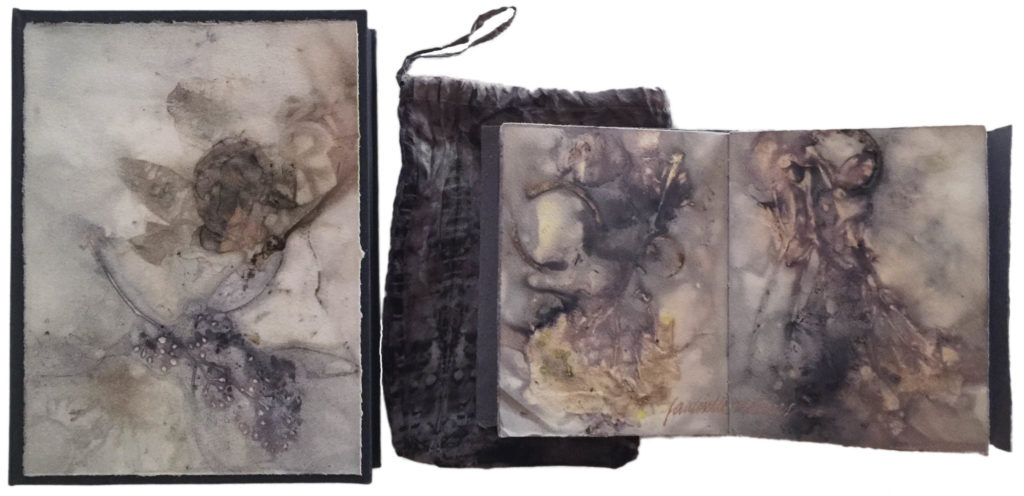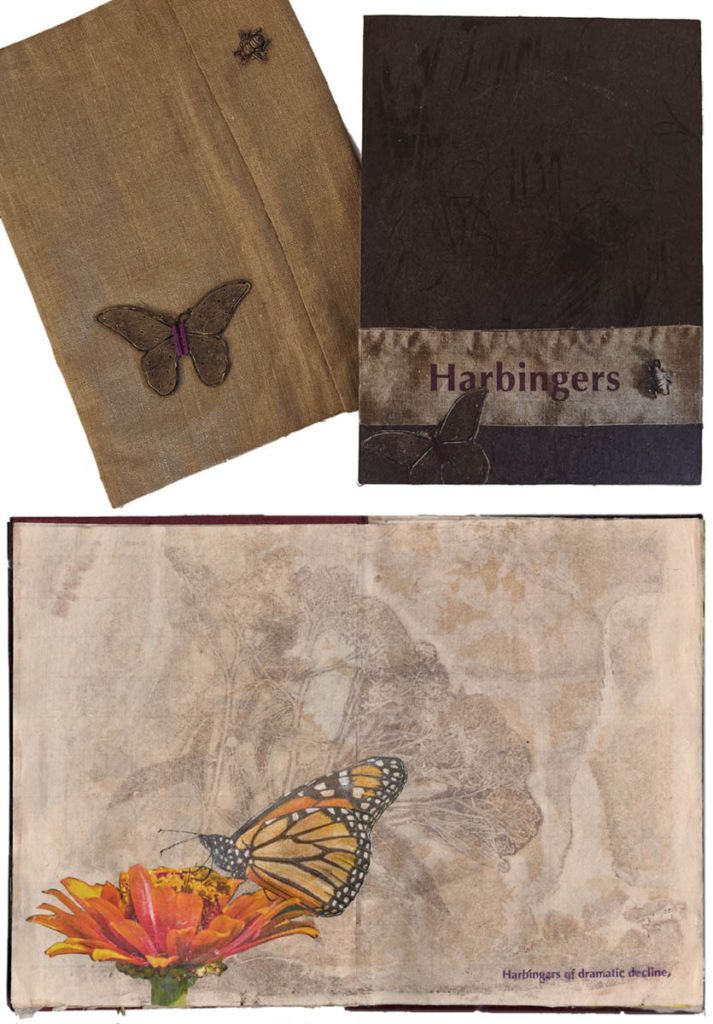Girlfriends

For the 300th anniversary of the Salem Witch Trials in 1992, I researched the history and submitted a proposal for a memorial. This book, “Witch”, completed thirty years later, contains the text below with a list of the 20 convicted and put to death.
In the area surrounding Salem, Massachusetts, between February 1692 and May 1693, more than two hundred people were accused of witchcraft. Belief in the devil was strong in this relatively isolated, extremely religious community and a recent smallpox epidemic, attacks by Indigenous tribes and boundary disputes between neighbors had created a climate of fear and suspicion in which the accusations of a group of primarily young girls were considered credible.
The Court of Oyer (to hear) and Terminer (to determine), was appointed to hear these accusations. At this time, some believed witches were able to physically torment unsuspecting victims and the magistrates decided to allow this controversial use of “spectral evidence” — the appearance of invisible apparitions only the afflicted can see. The girls acted erratically, told incredible stories about the accused and of their visions. In some instances, perhaps seeking attention or influence, the accusers were clearly fabricating their torment, however their behavior may have been caused by post-traumatic stress or a neurological illness known as conversion disorder. It may also have been the result of ergot toxicosis caused by the consumption of contaminated rye bread. The erratic behaviors and accusations were likely the result of a combination of factors but much damage was done. Thirty of those accused were found guilty. Fourteen women and five men were hanged. One man, Giles Corey, was pressed to death for refusing to plead and at least five died in jail.
In January of 1693, a new court, the Supreme Court of Judicature, was appointed which no longer accepted spectral evidence. With this standard of evidence gone, most were found not-guilty and released and the few convictions remaining were overturned by the governor. The episode is one of Colonial America’s most notorious cases of mass hysteria. It has been used as a cautionary tale about the dangers of isolation, religious extremism, false accusations, and lapses in due process.
Fourteen vintage engravings digitally printed over eco-prints on translucent paper and attached at the foredge. 6.5” x 6” closed, 6.5” x 168” open. Collaged board cover. Clay overlay, embossed with the title, affixed to the box.
2023 Transitions
Slate
testtttt2
[wonderplugin_gridgallery id=30]
2015
[“wonderplugin_gridgallery id=30″][wonderplugin_gridgallery id=”30”]
Vessel

Vessel uses Dickinson’s poem of the same name:
WHERE ships of purple gently toss
On seas of daffodil,
Fantastic sailors mingle,
And then—the wharf is still.
Vessel is a unique book. 7.5” x 5.5” with 32 eco printed pages. The text is handwritten in copper ink. It’s housed in a silk bag and phase box also eco printed.
Witch

For the 300th anniversary of the Salem Witch Trials in 1992, I researched the history and submitted a proposal for a memorial. This book, “Witch”, completed thirty years later, contains the text below with a list of the 20 convicted and put to death.
In the area surrounding Salem, Massachusetts, between February 1692 and May 1693, more than two hundred people were accused of witchcraft. Belief in the devil was strong in this relatively isolated, extremely religious community and a recent smallpox epidemic, attacks by Indigenous tribes and boundary disputes between neighbors had created a climate of fear and suspicion in which the accusations of a group of primarily young girls were considered credible.
The Court of Oyer (to hear) and Terminer (to determine), was appointed to hear these accusations. At this time, some believed witches were able to physically torment unsuspecting victims and the magistrates decided to allow this controversial use of “spectral evidence” — the appearance of invisible apparitions only the afflicted can see. The girls acted erratically, told incredible stories about the accused and of their visions. In some instances, perhaps seeking attention or influence, the accusers were clearly fabricating their torment, however their behavior may have been caused by post-traumatic stress or a neurological illness known as conversion disorder. It may also have been the result of ergot toxicosis caused by the consumption of contaminated rye bread. The erratic behaviors and accusations were likely the result of a combination of factors but much damage was done. Thirty of those accused were found guilty. Fourteen women and five men were hanged. One man, Giles Corey, was pressed to death for refusing to plead and at least five died in jail.
In January of 1693, a new court, the Supreme Court of Judicature, was appointed which no longer accepted spectral evidence. With this standard of evidence gone, most were found not-guilty and released and the few convictions remaining were overturned by the governor. The episode is one of Colonial America’s most notorious cases of mass hysteria. It has been used as a cautionary tale about the dangers of isolation, religious extremism, false accusations, and lapses in due process.
Fourteen vintage engravings digitally printed over eco-prints on translucent paper and attached at the foredge. 6.5” x 6” closed, 6.5” x 168” open. Collaged board cover. Clay overlay, embossed with the title, affixed to the box.
Permian

During the Permian geologic period, which spanned 47 million years, 90% of the planet’s species were lost in the largest mass extinction in Earth’s history. The cause may have been an enormous asteroid, massive volcanic eruptions or the release of methane reservoirs in the ocean. Whatever event contributed to the world evolving from icehouse to […]
Siege

In response to the Russian invasion of Ukraine, in March I began “Siege”, which evolved with the ongoing conflict. A Russian hat, covered with metals, is paired with images of the conflict in two collaged books, each 5.5” x 7” with eight pages. They are housed in a container of Arches cover black, 14.25” x 5.75” x 1”.Sadly, the aggression continues …
Harbingers

Harbingers of dramatic decline, wild pollinators, butterflies and bees, are becoming extinct. Loss of habitat, disease and pesticides take their toll. Plant milkweed and native plants, reverse this loss, while we still can. This small book of Yo Kou handmade paper with collaged images, laments their fate. The concertina binding, has 22 pages attached at the foredge, flutter style — 8” x 5.5” closed, 8” x 121” open. It has a paper over board cover and is housed in a sleeve of vintage fabric with brass butterfly and bee attached.
Esoteric Time

This 19th century New England steeple clock seemed an appropriate repository for one of Emily Dickinson’s untitled poems about time. Originally written on the back of an envelope, it celebrates nature’s clock with the song of the cricket announcing the summer and its cessation heralding its end.’T was sooner when the cricket went Than when the winter came, Yet that pathetic pendulum Keeps esoteric time. A symbol of good fortune, crickets were often kept in cages so that their song could be enjoyed, a fate Dickinson might have considered related to the subjugation of women in her time. The image behind the cricket on the clock’s pendulum is a map of Amherst in the early 1800’s showing Dickinson’s home. The only currently authenticated photograph of Dickinson is from the Amherst College Archives & Special Collections. This is a unique book, 20” x 11” x 4.5” of wood, glass and metal with prints on transparent film.

